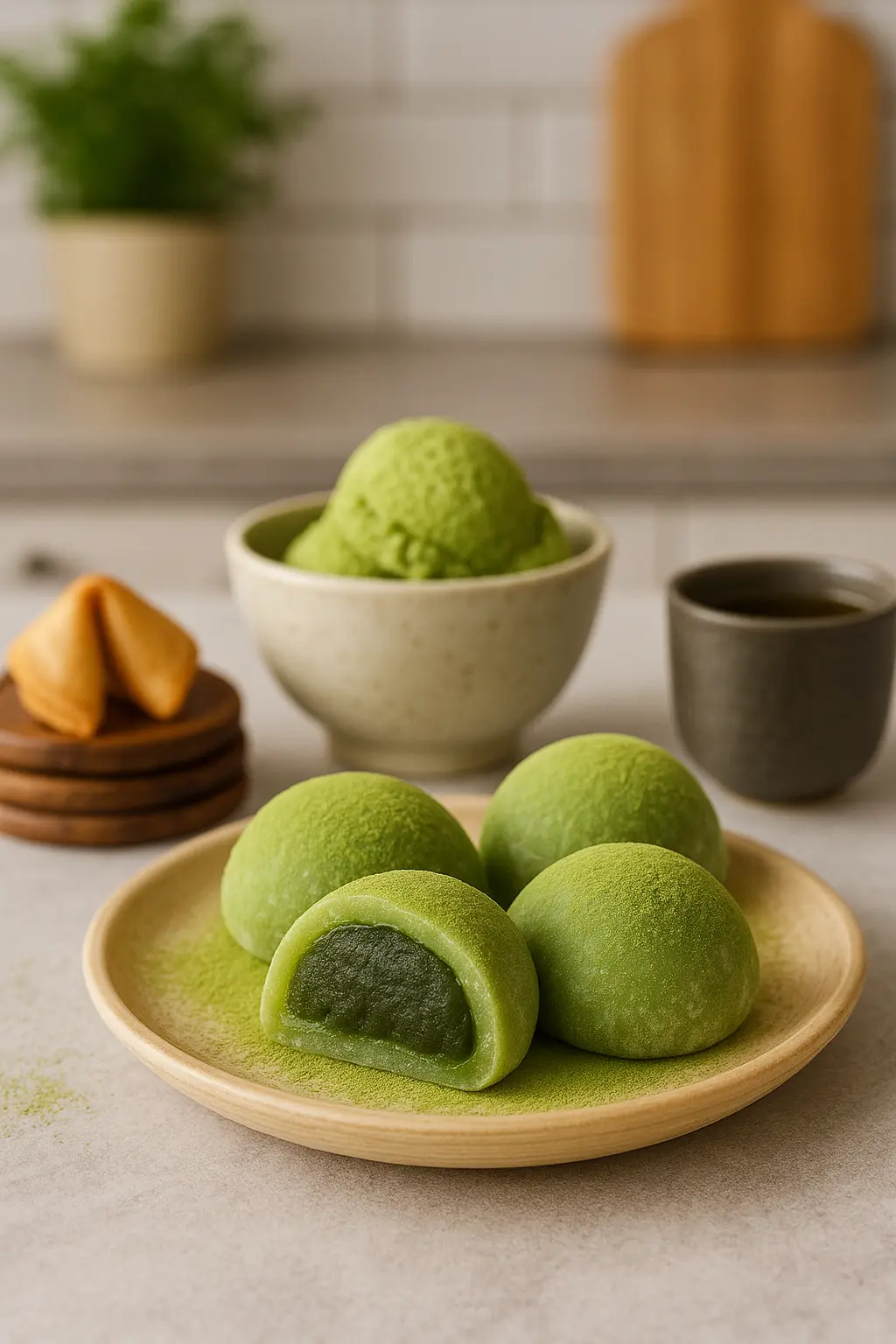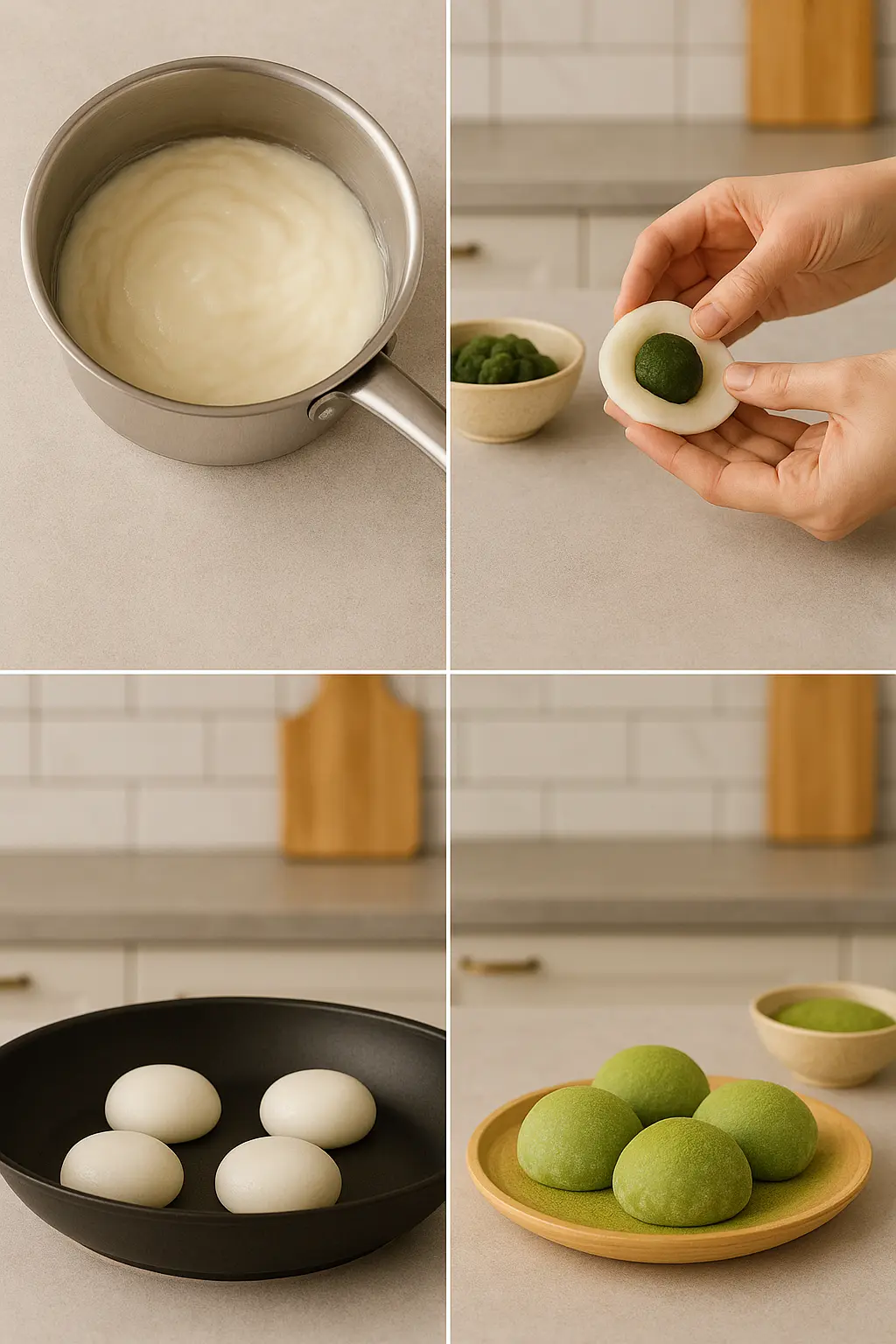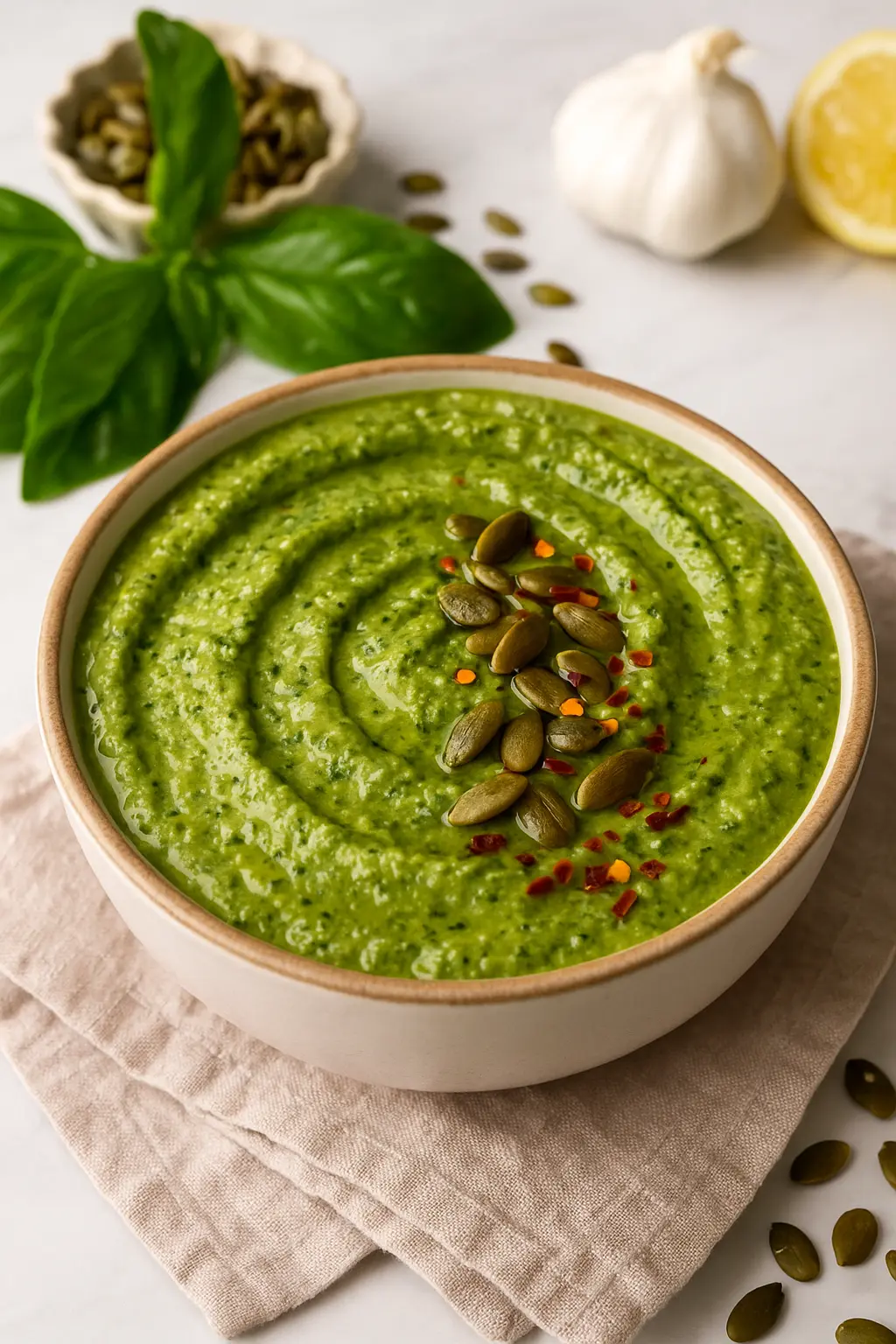Green Tea Mochi Recipe: Soft, Chewy, and Absolutely Irresistible
There’s nothing quite like the soft, stretchy bite of green tea mochi. For me, this chewy delight brings back the joyful messiness of making sweets with my grandmother—her kitchen filled with the earthy aroma of matcha, laughter, and sticky hands. This green tea mochi recipe is a beautiful blend of tradition and innovation, perfect for any season.
Whether you’re serving it as a chilled dessert for summer or a cozy snack during winter, green tea mochi is always a good idea. Inspired by American ingenuity and the elegance of Japanese confections, this version of mochi highlights the vibrant flavor and stunning color of green tea, delivering a balanced, semi-sweet bite every time.
Why You’ll Love This Recipe
If you’ve never made mochi at home before, this is your perfect starting point. Here’s why:
- Flavor-packed: The earthy notes of matcha give this green tea mochi a unique depth of flavor.
- Perfect texture: Soft, chewy, and just the right amount of bounce.
- Versatile: Serve warm or cold—green tea mochi suits every season.
- Naturally gluten-free: Made with glutinous rice flour, it’s ideal for gluten-sensitive folks.
Ingredients
To make this chewy goodness, gather these simple ingredients:
- 1 cup glutinous rice flour (mochiko)
- 3/4 cup water
- 1/4 cup granulated sugar
- 2 teaspoons matcha green tea powder
- Cornstarch or potato starch for dusting
- Optional: red bean paste or vanilla ice cream for filling

Kitchen Tools
- Microwave-safe mixing bowl
- Silicone spatula
- Measuring cups & spoons
- Rolling pin (optional)
- Muffin tins or molds (optional)
- Parchment paper or plastic wrap
Step-by-Step Instructions
1. Mix Your Dry Ingredients
In a microwave-safe bowl, combine the glutinous rice flour, sugar, and matcha powder. Stir well to evenly distribute the green tea flavor throughout the mochi base.
2. Add Water and Stir
Slowly add the water while stirring continuously. The batter for your green tea mochi should be smooth and lump-free.
3. Cook the Mochi
Microwave method:
- Cover the bowl with plastic wrap.
- Microwave on high for 1 minute, stir, then repeat twice more until the mixture becomes thick and stretchy.
Stovetop method:
- Place the bowl over a simmering double boiler.
- Stir constantly until it thickens and becomes elastic.
4. Dust and Shape
Transfer your hot green tea mochi dough to a surface dusted with cornstarch. Let it cool slightly, then roll to about 1/4 inch thickness. Use a cookie cutter or knife to shape your mochi.
5. Add a Filling (Optional)
If you want filled green tea mochi, place a teaspoon of red bean paste or ice cream in the center of each round. Fold and pinch the dough to seal it shut.
6. Chill and Serve
Wrap each mochi in parchment paper or plastic wrap. Refrigerate for at least 30 minutes before serving. Enjoy your homemade green tea mochi chilled or at room temperature.

Tips
- Use quality matcha: The flavor of your green tea mochi depends heavily on the matcha powder. Ceremonial grade gives a smoother taste.
- Prevent sticking: Always use starch liberally to keep the dough manageable.
- Work quickly: Mochi sets fast—prep everything in advance.
Serving Suggestions
- Pair with a cup of matcha or jasmine tea for a themed treat.
- Top your green tea mochi with sweetened condensed milk or coconut flakes.
- For summer, try frozen green tea mochi ice cream—a fun twist!
Variations
- Matcha-coconut mochi: Add 2 tbsp coconut milk to the batter.
- Mango-matcha mochi: Fold in small mango chunks before shaping.
- Chocolate-filled mochi: Use mini chocolate chips or a ganache core.
Storage Tips
- Plain green tea mochi: Store in an airtight container in the fridge for up to 3 days.
- Filled mochi: Best consumed within 24 hours for optimal texture.
Nutrition (Per Serving)
- Calories: ~120
- Carbs: 28g
- Sugar: 10g
- Protein: 1g
Note: Values may vary based on fillings.

Frequently Asked Questions
What is green tea mochi made of?
(People want to know the ingredients and how it’s flavored.)
Is green tea mochi healthy?
(Searchers are interested in its nutritional value, calories, and health impact.)
What does green tea mochi taste like?
(Taste and texture are common curiosity points for new eaters.)
Is green tea mochi gluten-free?
(Many people search this due to dietary restrictions.)
Does green tea mochi have caffeine?
(Because it’s made with green tea or matcha, people wonder about caffeine content.)
How do you store green tea mochi?
(Whether to refrigerate or freeze, storage is a common concern.)
Cultural Significance
While mochi originates from Japan, green tea mochi has taken on a global identity. In Japan, mochi is traditionally eaten during New Year celebrations for good luck and prosperity. With matcha being a prized element of Japanese tea ceremonies, green tea mochi symbolizes a fusion of two beloved cultural staples.
In the U.S., this fusion has evolved into a trendy dessert found in sushi restaurants, artisanal ice cream shops, and even grocery stores. Yet, making green tea mochi at home allows you to control the sweetness, quality, and creativity—something store-bought versions can’t compete with.
Read more : https://chefnip.com/mochi-glass-dessert/
Green Tea Mochi for Every Occasion
Isn’t just a snack—it’s a conversation starter and a memorable dessert. Here are some creative ways to include it in your events:
- Tea Parties: Serve small mochi bites on elegant platters alongside herbal teas.
- Holiday Gifts: Wrap individual pieces in decorative parchment and include in dessert boxes.
- School Lunch Treats: Pack mini mochi balls in bento boxes for a delightful surprise.
- Wedding Favors: Present guests with beautifully wrapped green tea mochi as edible mementos.
The Science Behind the Chew
Ever wonder what makes green tea mochi so wonderfully chewy? It’s all thanks to amylopectin, a component of glutinous rice flour. Unlike regular rice flour, mochiko has almost no amylose, which would otherwise make the dough crumbly. When heated, the starch gelatinizes, creating that signature stretch and softness.
This chewy texture is part of what makes green tea mochi so addictive. Combined with the antioxidant-rich matcha, it’s a guilt-free indulgence with a uniquely pleasant mouthfeel.
Benefits of Matcha
Matcha isn’t just for flavor—it’s packed with health benefits:
- Rich in Antioxidants: Contains catechins that fight free radicals.
- Calm Alertness: Thanks to L-theanine, matcha offers a smoother energy boost than coffee.
- Metabolism Support: Some studies suggest matcha can help with fat oxidation.
- Mood Enhancer: Ritualistically making and enjoying matcha can be a mindful moment in your day.
By including it in green tea mochi, you get a dose of all these benefits in a delicious package.
Pairing Suggestions
To elevate your recipe experience, try these drink pairings:
- Matcha Latte: Double down on the green tea flavor.
- Genmaicha: This roasted brown rice tea complements the chewy sweetness.
- Jasmine Iced Tea: A floral contrast that brightens the earthy matcha tones.
- Sparkling Water with Lemon: A refreshing palate cleanser after a bite of sweet mochi.
Troubleshooting
Issue: Dough is too sticky to handle.
Solution: Use more starch for dusting. Try potato starch, which tends to be less powdery than cornstarch.
Issue: Mochi is too hard after refrigeration.
Solution: Let it sit at room temperature for 15–20 minutes or steam briefly before serving.
Issue: Uneven cooking in the microwave.
Solution: Stir thoroughly between microwaving intervals and ensure an even spread of the batter.
Issue: Mochi tears when wrapping a filling.
Solution: Roll the dough slightly thicker or use smaller filling portions.
Beyond Dessert: Savory Green Tea Mochi?
Yes, green tea mochi doesn’t have to be sweet. Experiment with mild, savory fillings like:
- Cream cheese and scallions
- Miso paste and sesame seeds
- Avocado and lime zest
These combinations turn green tea mochi into a fusion appetizer that surprises and delights.
Eco-Friendly Mochi Making
Making green tea mochi at home can be more sustainable:
- Buy matcha in bulk to reduce packaging waste.
- Use reusable silicone mats instead of disposable parchment paper.
- Compost your cornstarch waste if you’re using a compostable starch.
Every small step counts when you’re making something this good.
User Testimonials
“I made this green tea mochi for my daughter’s birthday and it was a HIT! The texture was perfect and the matcha flavor wasn’t overpowering.” – Lisa from Oregon
“As someone gluten-free, I never thought I’d enjoy desserts like this again. Thank you for this amazing green tea mochi recipe!” – Jared from Austin
“This was my first time working with glutinous rice flour. I followed the steps and it came out beautifully! Going to experiment with more fillings next time.” – Priya from New Jersey
Conclusion
Whether you’re an experienced baker or new to Japanese-inspired sweets, green tea mochi is a delightful recipe to add to your repertoire. It’s easy to make, beautiful to serve, and a treat everyone will remember.






Comments and Reviews